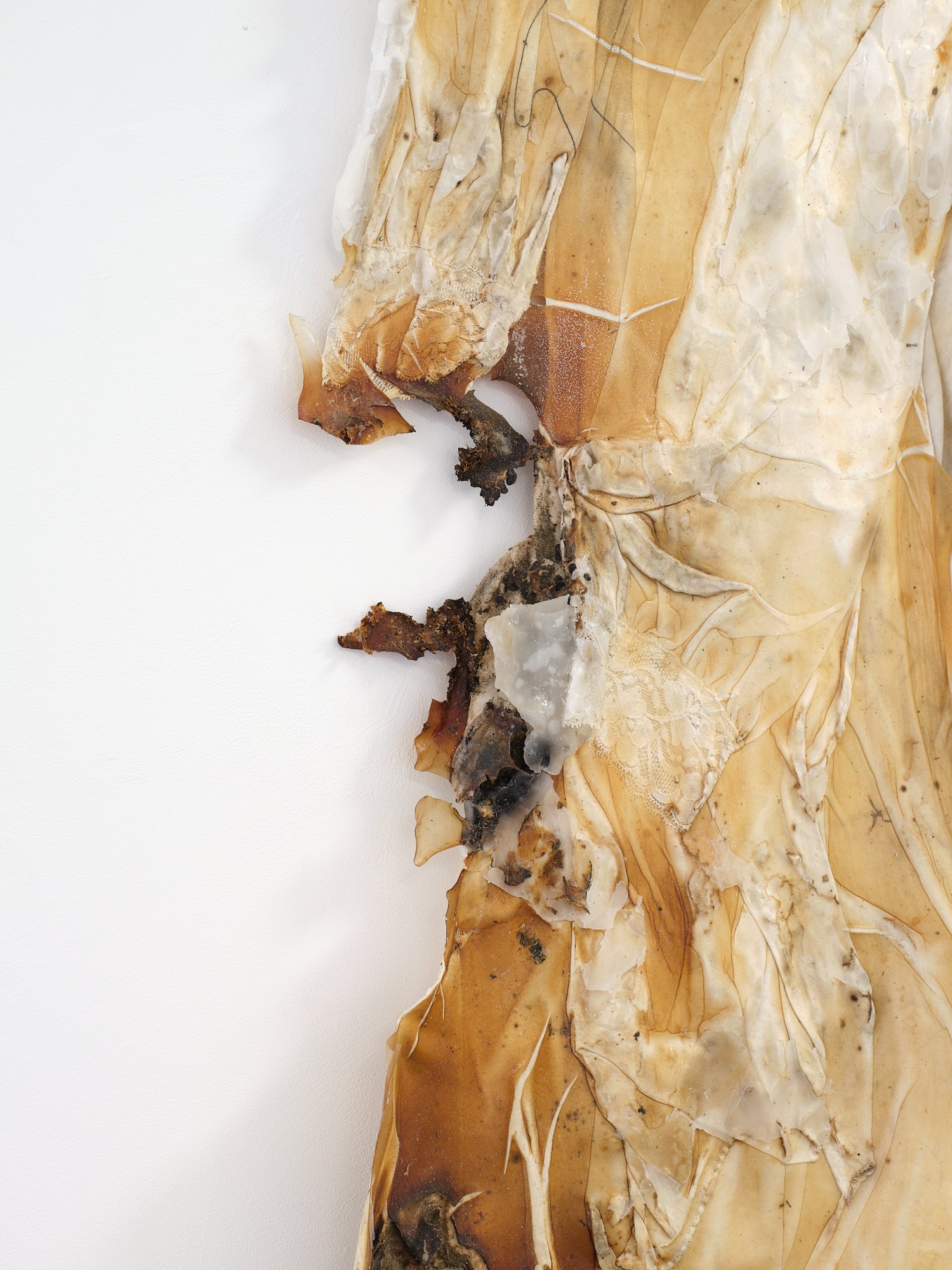Inga Fillary’s practice is intentionally protean, employing various materials and processes. She creates situations where she relinquishes control over outcomes, and accepts contingency as a feature of reality. Her recent works attempt to explore philosophies that embrace this uncertainty. ‘Low hierarchy’ substances, and materials disturbed from their former authority are the cornerstone of her practice.
“Fillary explores speculative realism and the darkly weird in her sculpture, painting and performance practices. Materially oriented, her work examines abjection, the periphery of social codes of normativity and the exhilaration of destruction”
— Micheal Do, Curator Space as Substance, Auckland Art Fair 2020
Fillary lives and works in Tāmaki Makaurau Auckland.
She holds of a Master of Fine Arts with First Class Honours and is a Doctoral Candidate at Elam School of Fine Arts, University of Auckland.
'Untitled', bike inner tube, found fabrications, rubber band and bitumen, 500mm x 400mm 2018
'Speculative Window', 2019. Window, soil, white solvent cement, liquid nails, gorilla glue and found objects on board. 920 x 800mm. image courtesy of gareth moon
installation view, left to right with kelly pretty Rebecca Wallis, monique lacey, teresa peters and inga fillary. image courtesy of gareth moon
installation view, left to right with monique lacey, inga fillary and judith darragh. image courtesy of gareth moon
Inga Fillary
“Humans are weird, so the methods we use to consider ourselves must be by necessity equally so. I like to think that art has come to take on the role previously filled by philosophy, guiding us in questions of who or what we are, how we interact with the planet and our place in the cosmos, what is reality and what is perception. Art is a type of thought process that is discrete from actual knowledge.
For me, a creative examination of such issues places me in a space of dis-ease, my process often descends into a fight, between myself and the work, between truth and aesthetics, human perception and the beyond, time and space - strife. I think my entire oeuvre is a metaphor for strife! Even my most formal paintings represent the aftermath of an exhausting roulette of dirty brawls and altercations. To my mind strife doesn’t necessarily invoke a negative connotation though, it just so happens that that place of comfort is disassociated from truth. My working process is one step removed from madness, containing neither resolution nor destination, only the great riddle of being here. Through a formula of philosophical and material decay my work lingers in the world of human weirdness and discomfort. Art, like Socrates view of philosophy is a practice of “learned ignorance”.
My recent works are collections of materials, a flawed humanity’s accoutrements. The materials I choose tend to occupy the corporeal world as substantial havens of content and form but they also speak to the processes and journeys of their experiences, deeper realities skulk beneath their perceivable surfaces. I like the support/surface idea that matter has something at work within it, that “matter thinks”. I look for materials hungry for something; discarded matter that still retains the vestiges of worth, beams that do not support, windows that no longer frame a view, steel, insistently metal and unpliable, which are bounded and constrained by frames and formal shapes in an enforced order that echoes the structures human animals try to foist on earth. As Eugene Thacker says - there are no limits, only the ones we impose ourselves.
Contemporary art has the capacity to explore its own nonsensical condition through engagement with philosophy, we turn to art for revelation, to interrogate the real through poetic artifice. For me the material is very important, the medium is the message.
It was an honour to be invited to be part of mothermother, a groundbreaking initiative to finally begin a levelling out of the female to male ratio of representation we currently have in the (art) world. Groundbreaking also in its opportunity for each artist to nominate her successor and show work alongside her, which is why I chose Rebecca Wallis. Beyond her talent and wonderfully thought-provoking work, I knew that Rebecca shared an interest in the writing of anthropologist Mary Douglass on pollution rituals and the influence she had, in turn, on Julia Kristeva’s understanding of the psychosexual stage - the abject.”
Inga Fillary x mothermother 2020












